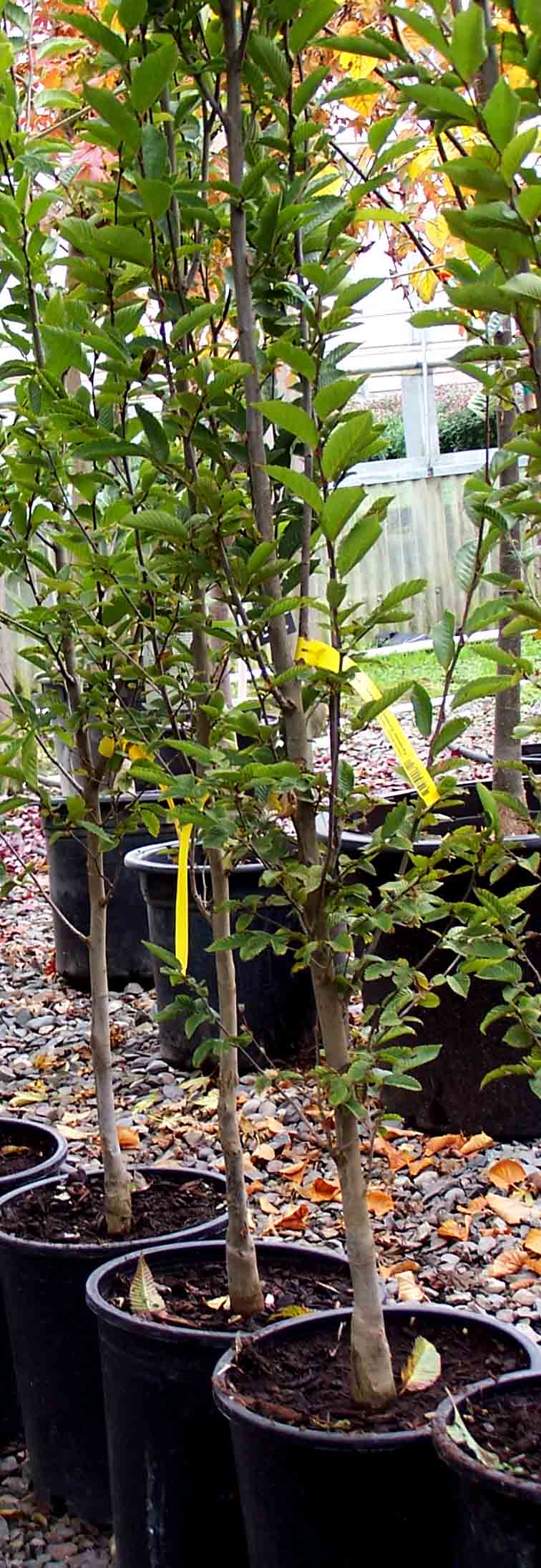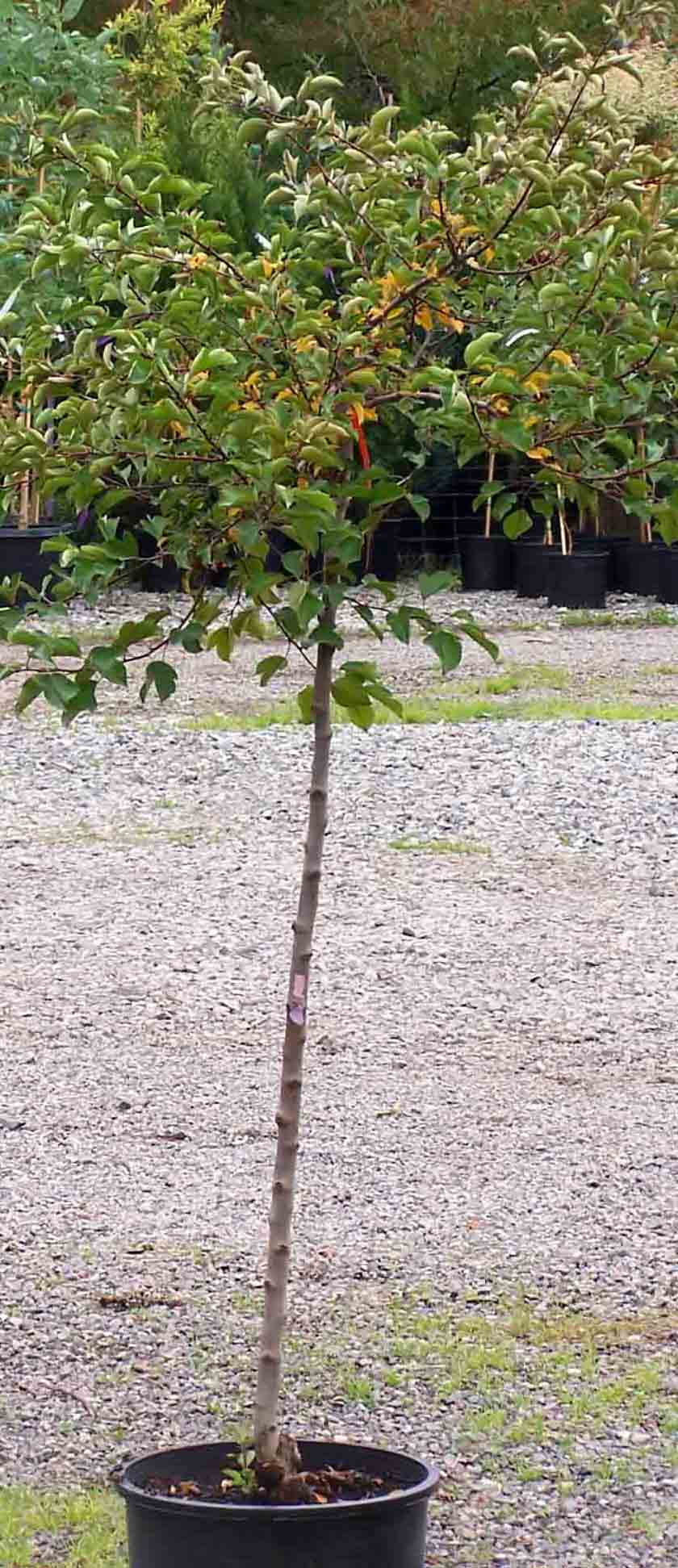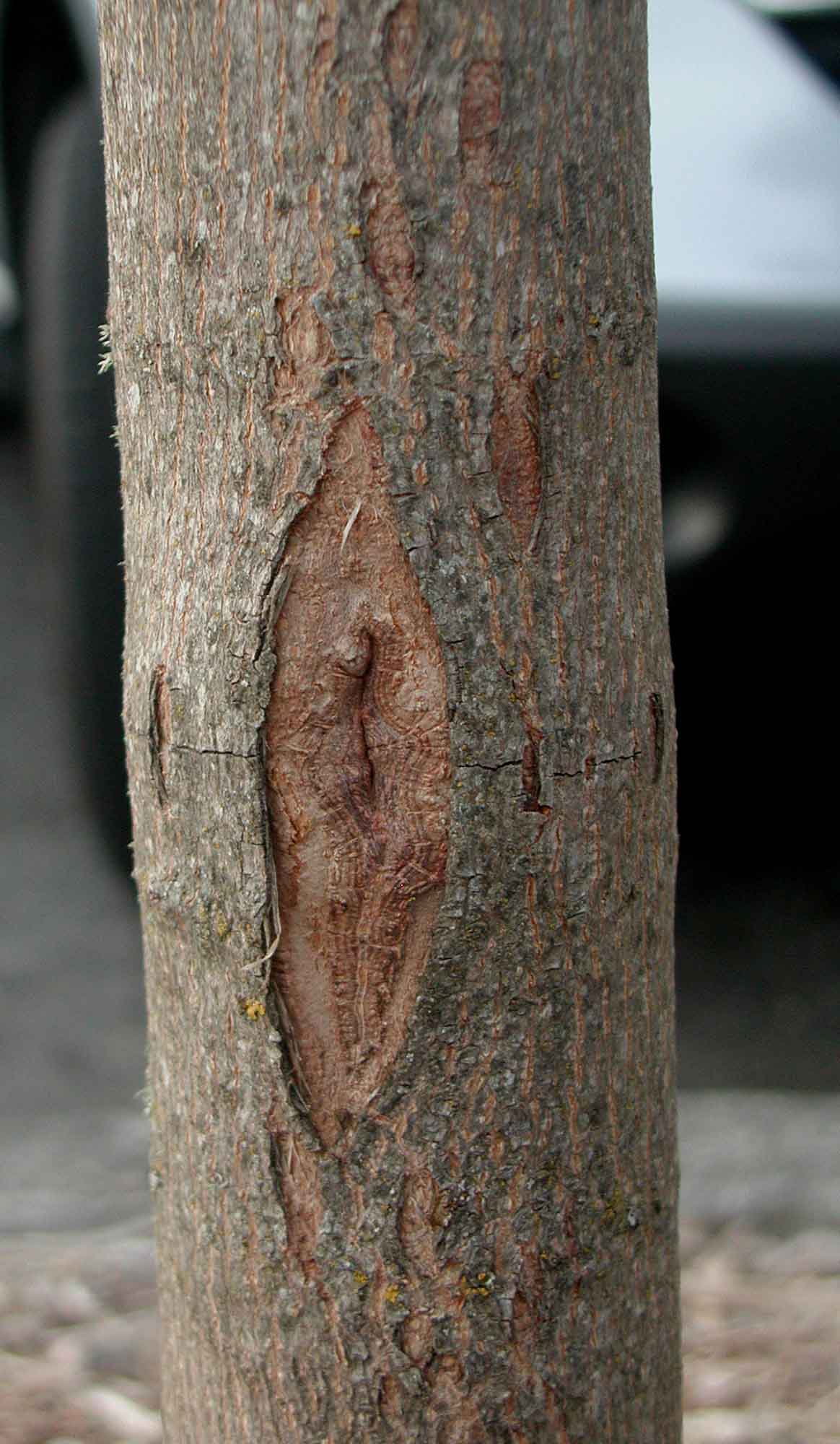(Note: this is a really LONG post. Not in text – but in photos! Sorry for all the scrolling.)
I don’t know about you, but after spending three weeks on my hands and knees looking for trunk rots, surface roots, and suckers, I’m ready to become bipedal again. So today let’s look at trunks – and what shouldn’t be missing on them.
Many young trees have numerous short branches along their trunk, as shown in the photo below:
>
Unfortunately, many nurseries and gardeners think this looks scruffy, and respond by pruning these branches off, leaving a tree such as the one in this picture:

Personally, I think these trees look like lollipops, but aesthetics aside, this type of pruning can inadvertently damage young trees. Their bark is often thin and sensitive to environmental stress – especially sunburn. Without those short branches deflecting the sun from the bark surface, the living tissues under the bark can be killed, creating dead patches on the trunk:

How can you tell if the tree you’re considering has been improperly pruned? Just look for those tell-tale pruning cuts, as a close examination of the lollipop tree reveal:

In time, these trees develop thicker bark, and the lower branches are gradually shaded out as the crown increases. Be patient! Let your trees be a little fuzzy when they’re young. They’ll grow out of it.
Not to mention those little branches feed the roots and strengthen the trunk.
Absolutely, Deirdre! But it seems that people who consider aesthetics first (i.e. those people who prune away the lower branches) aren’t very concerned with physiology. So I go for the ugly scarring to get the point across. (But your point is well taken nonetheless.)
I think that it was George Brown (the English pruning guy) who called those bits and bobs of twigs and foliage on the trunk the plant’s ‘furnishings’.
Jimbo, I think the trees in the first photo are elms. The poorly pruned one, I’m not sure. Maybe a Callery pear? As anyone who knows me will tell you, I am a terrible taxonomist. If I were smarter, I’d write down descriptions of my photos as I take them, but I’m not smarter.
I think as much as anything else, people lack imagination. Buyers want a tree to look like their idea of a tree; to have a bare trunk.
Right, Deirdre, and if they have a small yard, they want perfect little miniature trees. Wish they’d just buy plastic ones and leave the live stuff alone.
My monitor resolution isn’t the best, so it’s very difficult to tell what kind of trees these are. Yet that may well be of some importance…
The first group look something like fastigate hornbeam – smooth trunk, large trunk swelling at the graft – I have some very like this in my nursery. That type of tree, of course, is very fully branched from low on the trunk up.
Again, the photo is not clear enough to say for sure, but the second tree looks very much like a grafted standard, perhaps a crab. If that’s the case, then of course there would be no lower trunk branches!
Linda, better start labeling for genus and species!!
Thanks, Brian, you could very well be right. I vow to take a pad and pencil along when I do my nursery plant photos!
I second Brian’s vote for Carpinus in the first photo — those particular plants would make a great hedge if the lower branches had been left alone.
If you’re using a digital camera, which I assume you are, no need for pad and paper. Just take a picture of the sign or tag for a plant. Pixels are free! I’m still training myself to remember, but when I do, it’s been making my visits to botanical gardens and nurseries immeasurably more useful.